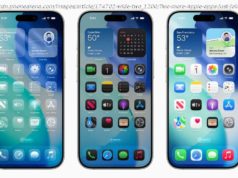Samsung introduced a pair of ultra-small, high-resolution image sensors today that will support the development of more smartphones that integrate as many cameras as possible into their designs. The new 0.
Samsung introduced a pair of ultra-small, high-resolution image sensors today that will support the development of more smartphones that integrate as many cameras as possible into their designs.
The new 0.8-micrometer pixel image sensors are the 48-megapixel Samsung ISOCELL Bright GM1 and the 32Mp ISOCELL Bright GD1. Samsung says that even at a reduced pixel size, the new sensors provide greater design flexibility, which means, among other things, more cameras packed into smartphone designs, as well as better utilization of space inside increasingly slimmer and bezel-free bodies. Both sensors are also based on Samsung’s latest pixel isolation technology that optimizes performance especially for smaller-dimension pixels.
“Demand for ultra-small, high-resolution image sensors are growing as smartphones evolve to deliver new and more exciting camera experiences for users,” said Ben Hur, vice president of System LSI marketing at Samsung Electronics. “With the introduction of our cutting-edge 0.8μm-pixel Samsung ISOCELL Bright GM1 and GD1 image sensors, we are committed to continue driving innovation in image sensor technologies.”
Samsung is expecting to put both sensors into mass production in the fourth quarter. In addition to the Tetracell technology, the company says that where four pixels are merged to work as one to increase light sensitivity, the GM1 and GD1 can deliver light sensitivity equivalent to that of a 1.6 micrometer pixel image sensor at 12Mp and 8Mp resolution, respectively. The sensors also support electronic image stabilization, and a real-time high dynamic range feature is part of the GD1 to deliver more balanced exposure, richer color and detail when filming selfie videos or streaming live video, even in low-light environments.
Samsung first announced its ISOCELL technology back in 2013, which reduces color “cross talk” between pixels by placing a physical barrier and allowing small-sized pixels to achieve higher color fidelity.
As the folks over at SamMobile note, meanwhile, cameras are now a defining feature that set some smartphones apart from others. “Manufacturers have consequently integrated multiple cameras while maintaining the sleek designs of their devices. Samsung’s new solutions will address this demand for ultra-small, high-resolution image sensors.”






